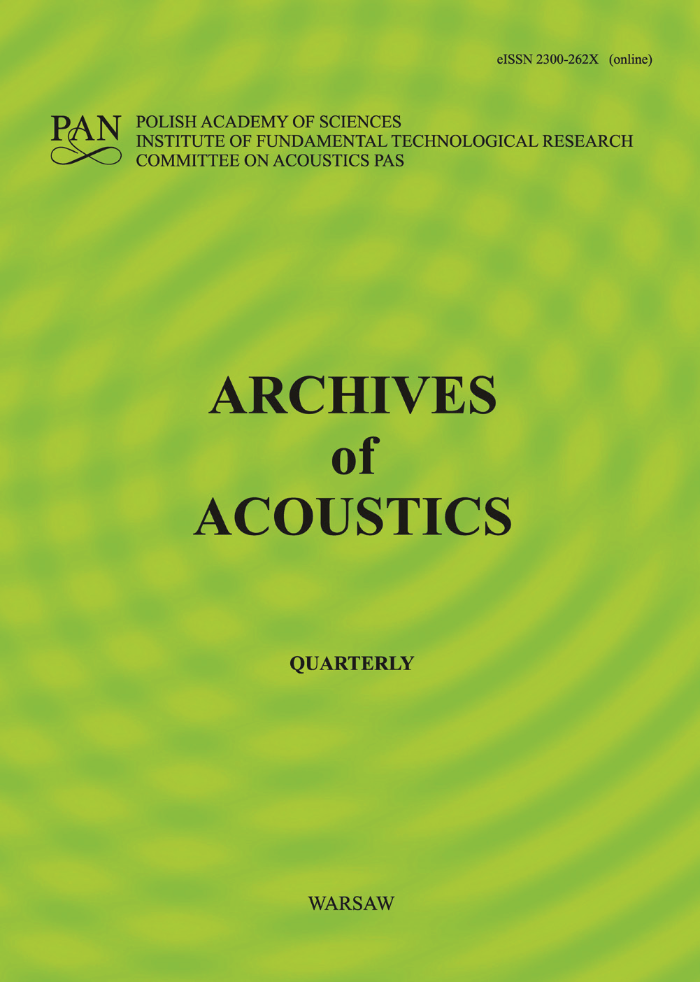Abstract
This paper presents a method for safe retuning of fixed-pitch string instruments to alternative musical scales with fewer degrees than their original design. Our approach uses a systematic monotonic surjective mapping to assign the existing set of strings to a new, smaller set of pitch classes. The primary goal is to preserve the instrument’s timbre and structural integrity by keeping string tension changes within safe limits. We demonstrate the method on a grand piano and an upright piano retuned from 12-tone equal temperament (12-TET, 12EDO) to 10-tone equal temperament (10-TET, 10EDO). Presented approach may be generalized for retuning from N- to M-step scales (N > M) and to other fixed-pitch string instruments. A grand piano was safely retuned using the proposed method and successfully used in a professional concert.
Keywords:
monotonic surjective mapping, decaphonic piano, 10-tone equal temperament, 10TET, 10EDO, alternative instrument tuning, xenharmonic, string tensionReferences
- Bandy C. (2025), A study in reharmonization: Jacob Collier’s subversive vocal arrangements of popular tunes, Ph.D. Thesis, Kent State University, United States, Ohio.
- Bucur V. (2016), Handbook of Materials for String Musical Instruments, Springer Cham, https://doi.org/10.1007/978-3-319-32080-9.
- Fletcher H. (1964), Normal vibration frequencies of a stiff piano string, The Journal of the Acoustical Society of America, 36(1): 203–209, https://doi.org/10.1121/1.1918933.
- Fraser J. (2023), Microtonality in a Western setting, [in:] Music Talks: Proceedings of the Western Sydney University Undergraduate Musicology Conference 2022, Williams J., Stead M., Leonard J. [Eds.], Western Sydney University, https://doi.org/10.26183/X0RYNF79.
- Hideya A. (2021), Like Spring Sea, 10 tone equal temperament song (10-TET 10EDO), https://www.schwaben.jp/ongaku08.html.
- Hobby K. Sethares W.A. (2016), Inharmonic strings and the hyperpiano, Applied Acoustics, 114: 317–327, https://doi.org/10.1016/j.apacoust.2016.07.029.
- Hunt A.A. (2021), Foreword to The Equal-Tempered Keyboard, https://zwillinge.zentral.zone/vorschau/etkfrontmatter.pdf.
- Hunt A.A. (2022), The Equal-Tempered Keyboard [digital album], (recorded in 2021), https://aaronandrewhunt.bandcamp.com/album/theequal-tempered-keyboard.
- Louchet J. (2021), The Keyboard Stringing Guide for the Restoration of Pianos, Harpsichords and Clavichords.
- Martin G. (2025), The best-selling Nintendo franchises of all time, Endlessmode, https://www.pastemagazine.com/games/nintendo/best-selling-nintendofranchises. (access: 12.06.2025).
- Mathews M.V., Pierce J.R., Reeves A., Roberts L.A. (1988), Theoretical and experimental explorations of the Bohlen–Pierce scale, The Journal of the Acoustical Society of America, 84(4): 1214–1222, https://doi.org/10.1121/1.396622.
- Matthias M. (1990), Steinway Service Manual: Guide to the Care and Maintenance of a Steinway, E. Bochinsky, Germany, https://openlibrary.org/books/OL18238258M/Steinway_service_manual.
- Mendel A. (1949), Devices for transposition in the organ before 1600, Acta Musicologica, 21: 24–40, https://doi.org/10.2307/931533.
- Możdżer L., Danielsson L., Fresco Z. (2024), Beamo [CD], Teraz Teraz, https://www.discogs.com/release/33164979-Leszek-Mo%C5%BCd%C5%Bcer-Lars-Danielsson-3-Zohar-Fresco-Beamo.
- Możdżer L., Danielsson L., Fresco Z. (2025), Beamo [CD], ACT, https://www.prestomusic.com/jazz/products/9752880--beamo.
- Pilch M., Toporowski M. (2014), Former Temperations: Acoustic Basics and Practical Use [in Polish: Dawne Temperacje: Podstawy Akustyczne i Praktyczne Wykorzystanie], Akademia Muzyczna im. Karola Szymanowskiego, Frodo, Poland.
- Rasch R.A. (1984), Approaches to tuning and temperament, The Journal of the Acoustical Society of America, 76(S1): S40–S41, https://doi.org/10.1121/1.2021849.
- Rose M., Law D. (2001), A Handbook of Historical Stringing Practice of Early Keyboard Instruments, Vogel & Scheer.
- Senpai Z. (2023), Chromatic Etude for 10 EDO Piano No. 1 “Intervals”, https://scorefol.io/w/cllchoxyp000kl90f15j182bm. (access: 5.03.2025).
- Sethares W.A. (1998), Tuning, Timbre, Spectrum, Scale, Springer-Verlag London, https://doi.org/10.1007/978-1-4471-4177-8_12.
- Sevish (2017), Vidya, [on:] Harmony hacker [digital album], https://sevish.bandcamp.com/track/vidya.
- Stahl- und Drahtwerk Röslau GmbH (n.d.), Steel wire for strings "Röslau Blue Label" (access: 2.03.2025).
- Stanevičiūtė, Janicka-Słysz M. (2022), Music and Change in the Eastern Baltics Before and After 1989, Academic Studies Press, https://doi.org/10.2307/j.ctv2xszr6z.
- Thomas P.E. (1996), Music for one or more alternately tuned acoustic pianos, 1920–1993: Trends in melody, harmony, and technique, Ph.D. Thesis, University of Cincinnati, United States.
- Tomala L. (2024), Octave divided into 10 parts. Scientists prepare decaphonic piano for jazz legend Leszek Możdżer, Science in Poland (access: 5.03.2025).
- Xenharmonic Wiki (n.d.), 10edo/Music, https://en.xen.wiki/w/10edo/Music. (access: 5.03.2025).







